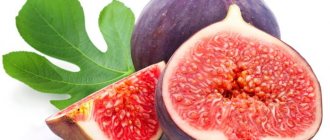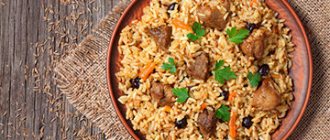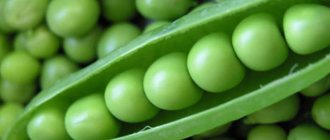Features of eating borscht while breastfeeding
After childbirth, women are forced to severely limit their diet. Although both a young mother and an infant require a huge amount of nutrients, many foods are prohibited when breastfeeding. A newborn baby, along with milk, receives all the substances that the mother consumes with food, and simply cannot absorb some of them.
Beetroot soup is allowed when breastfeeding, but not immediately after birth
We recommend reading: Beetroot: beneficial properties and contraindications
During breastfeeding, borscht must be prepared especially carefully, paying special attention to its components. Meat should be chosen lean and lean, and vegetables should be hypoallergenic and with a minimum amount of coarse fiber. Hot spices should not be added to the dish. If you take into account the child’s needs when preparing, the dish will not do any harm, but will be of great benefit.
Features of preparing borscht for a nursing mother
Bouillon
To prepare borscht, a young mother is advised to use light broths from chicken, turkey or rabbit meat and is prohibited from heavy broths made from fatty pork. However, the broth should not be completely lean. Modern researchers recommend that a nursing woman receive up to 1/3 of her calories from fat (i.e., do not limit their intake). Fat is necessary for the development of the baby's brain, the production of hormones, and tissue growth. [8]
Cabbage, beets
Cabbage and beets are rightly considered to be the cause of flatulence and associated pain in the intestines. But you should understand that these problems will only bother a young mother. With breast milk, the baby does not receive coarse fiber, which causes these processes, so the occurrence of colic should not be associated with the consumption of boiled vegetables [3].
Is it possible to eat borscht while breastfeeding?
During the breastfeeding period, women have to give up fatty and high-calorie foods, many vegetables and most fruits, canned and spicy foods. Borscht helps fill the lack of calories and nutrients. It contains not only vegetables, but also a nutritious broth with pieces of meat.
When consumed correctly, soup helps:
- eliminate calorie deficiency and cope with hunger;
- get the necessary animal protein from pieces of meat and broth;
- overcome vitamin deficiency with the help of vegetables in the dish.
Hearty beet soup improves digestion for a nursing mother
Borscht can be consumed by a nursing mother with a newborn; it becomes a valuable source of balanced carbohydrates, proteins and fats. It contains fiber that is useful for a young mother, cleanses the body, and amino acids that take part in building muscles in the baby. But the effect of a hot dish on the well-being of an infant depends on the composition.
Is it possible for a nursing mother to have borscht with beets?
Beets are one of the main ingredients in the classic soup. It is this that gives the dish its characteristic taste and red color. The benefit of beets is that they contain a lot of dietary fiber, saturate the body of the mother and infant with vitamins and organic acids, and are a source of silicon, manganese, chromium and copper.
A nursing mother can consume beetroot soup while breastfeeding. But it should be taken into account that the fiber in the vegetable can have an irritating effect on the newborn’s intestines and even lead to digestive upset. To prevent this from happening, you need to properly boil the vegetable until completely softened, this increases digestibility. For the first time, beetroot soup should be tried carefully and in small quantities to make sure that it does not cause allergies in the infant.
Beetroot in soup when breastfeeding can cause colic in a baby, so it must be boiled thoroughly
Is it possible for a nursing mother to have borscht with cabbage?
Another common ingredient in the first course is cabbage, which contains a lot of vitamins C and K. Despite all the benefits of the vegetable, it has a serious drawback - cabbage often leads to increased gas formation. This causes inconvenience even for an adult, and can cause constipation and painful colic in a baby.
Cabbage can be added to a dish for a nursing mother only when well boiled and in small quantities. Since white cabbage is especially conducive to gas formation, it is recommended to replace it with cauliflower or broccoli when breastfeeding; they have a milder effect.
Instead of white cabbage, it is better to put cauliflower in borscht during breastfeeding; it is easier to digest
Important! Borscht with sauerkraut should be excluded from the diet when breastfeeding; such a dish will almost certainly lead to flatulence and colic.
Is green borscht okay for nursing mothers?
If beets cause an allergy or intestinal disorder in a baby, then it can be replaced with sorrel, and an egg can be added instead of meat. The so-called green borscht with egg and sorrel can bring great benefits when breastfeeding. It improves digestion, strengthens blood vessels, and most importantly, intolerance to sorrel is extremely rare.
When adding sorrel to borscht during breastfeeding, you need to remember that the plant contains many organic acids. The amount of grass should be small, no more than a couple of bunches.
Borscht with sorrel and egg is a good option when breastfeeding if there are no kidney stones or gastritis
The only contraindications to sorrel are kidney and bladder stones, as well as acute gastritis in a nursing mother while breastfeeding. For these diseases, you will have to give up green soup.
Is it possible to have borscht with vinegar while breastfeeding?
To give borscht a bright red color, a little 9% table vinegar is often added to it. Such a preservative not only makes the dish more beautiful, but also improves its taste, and also extends shelf life.
However, you should avoid using vinegar while breastfeeding. A newborn baby can react negatively to acetic acid even in small quantities.
It is better to replace the vinegar in borscht with lemon when breastfeeding.
Attention! Instead of vinegar, you can add a little lemon to the soup; it is much safer and gives the same effect.
Experts' opinion
Achieving the most “clean” diet in terms of allergens, women often go to the extreme, leaving only zucchini, buckwheat and kefir on the menu. Yes, the baby will definitely not have rashes from such food, but the mother will not last long either. To restore the body of a woman who has given birth, she needs vitamins and nutrients, which can only be provided by rational, nutritious nutrition.
Can a nursing mother eat borscht? In terms of proper nutrition, borscht is an excellent healthy dish. Meat gives the soup satiety and enriches the body with protein, vegetables are perfectly digestible and ensure good digestion.
Experts in no way prohibit the consumption of borscht while breastfeeding. But there is one caveat: the soup must be prepared correctly. The traditional recipe for delicious, rich borscht will have to be slightly adjusted so that a nursing mother can eat it without fear.
Rules for preparing borscht for a nursing mother:
- You need to choose lean meat for the broth (veal, chicken, turkey).
- Use only fresh vegetables. There should be no canned ingredients!
- The soup must be prepared without traditional “frying”, that is, the vegetables can first be stewed with a drop of oil, but under no circumstances should they be fried.
- Do not add hot seasonings or garlic to the dish.
- You will also have to give up tomato paste; it is better to use fresh tomatoes.
- Sour cream with a fat content of no more than 10% is suitable for dressing.
- Housewives often add vinegar to borscht to make the soup a rich red color. Breastfeeding makes adjustments here too: instead of vinegar, it is better to use lemon juice or a little citric acid.
Most mothers are concerned about the question of whether it is possible to cook borscht with cabbage. After all, there is an opinion that this vegetable on the mother’s menu causes gas formation, constipation and colic in the baby. You can add cabbage to soup, but only fresh cabbage (sauerkraut is much more dangerous in terms of colic and gas). The amount of vegetable should not be too large. If the baby reacts sharply to white cabbage in the mother’s diet, then it can be replaced with fresh beet tops, broccoli, cauliflower or sorrel.
Experts advise including borscht in a nursing mother’s diet no earlier than 4-6 months of the child’s life. This dish is also not recommended as complementary feeding for children under one year of age.
According to breastfeeding consultants and pediatricians, borscht prepared according to these recommendations will not harm the baby if the mother is careful and wisely approaches the amount of soup eaten.
When can you eat borscht while breastfeeding?
During breastfeeding, borscht is allowed for a nursing mother. However, you can’t introduce it into your diet right away; you need to adhere to a reasonable time frame. If at any stage of lactation a breastfeeding baby develops a negative reaction, the dish will need to be excluded and try to be reintroduced into the diet no earlier than a month later.
Borscht during breastfeeding in the first month
In the first month of life, the newborn’s body remains especially sensitive and reacts sharply to any unusual food. Since the healthy soup contains potentially allergenic, high-fiber vegetables and meat broth, the dish can cause serious stomach upset in an infant.
In the first month of breastfeeding, borscht should not be included in the menu.
In the first month, it is better for a nursing mother not to experiment with healthy soup. If you introduce the dish into the diet too early, the infant will develop skin rashes, flatulence and abdominal cramps.
Borscht during breastfeeding in the second month
In the second month of life, a newborn baby adapts a little to food. During this period, new dishes can be carefully added to the diet of a nursing mother, including dietary low-fat borscht. In the second month, you should try the soup without spices and bay leaves, without adding sour cream, lemon juice, much less vinegar.
For the first time, you should eat nutritious soup in the morning, in the amount of only 1 large spoon. Thus, before the evening it will be possible to understand whether the new dish is well accepted by the infant’s body, or whether it is better to postpone the introduction of the product into the diet during feeding to a later date.
Borscht during breastfeeding for the 3rd month
In the third month of life, most infants calmly accept new foods in their mother’s diet. The likelihood of developing a negative reaction to borscht is reduced; it is best to introduce the dish to the menu in the 3rd month of breastfeeding.
You still need to start tasting the soup in minimal quantities. To begin with, just 1 spoon will be enough; if beets, cabbage or other ingredients cause digestive upset in an infant, this will become noticeable by the evening. If no alarming symptoms appear either that day or the next morning, the dish can be left in the diet.
In the third month of breastfeeding, you can try borscht almost without fear.
Contraindications
Despite the fact that sorrel is very beneficial for health, not everyone can eat it. There are a number of contraindications for use while breastfeeding:
- gastritis with high acidity;
- kidney disease;
- peptic ulcers of the stomach and intestines;
- salt metabolism disorders;
- gout;
- pregnancy;
- urolithiasis disease;
- allergy to sorrel, etc.
Situations often arise when it seems possible to eat sorrel, but it leads to unexpected reactions, especially when consumed in large quantities. Despite the fact that the product is not on the list of allergens, the baby may show signs of an allergic reaction, for example, rash, itching, cough, etc. In addition, the product actively affects the gastrointestinal tract of not only the mother, but also the child . Therefore, consuming the product in large quantities can cause colic and increased gas formation. The presence of tannins in the composition helps greatly with diarrhea, but it should be remembered that sorrel is a little strong, so it can cause constipation in infants. When breastfeeding in large quantities, greens can negatively affect the functioning of the kidneys, liver and gastrointestinal tract.
Rules for eating borscht while breastfeeding
To prevent soup from harming a small child, it must be consumed in accordance with several rules:
- A new dish should be introduced to the menu at a time when the child is completely healthy and does not suffer from colic or teething. If the child’s health is poor, then most likely the soup will cause a negative reaction.
- You need to try the soup during the day or in the morning in order to be able to observe the baby’s behavior until the evening. Even if there are no symptoms of food intolerance, you should wait until the next day to be completely sure.
- You should not try any other new foods on the same day as soup.
If a new product was successfully introduced into the diet during breastfeeding, then it can then be consumed not only in the morning, but also during the day and in the late afternoon. At the same time, any foods during lactation should be eaten in moderation. The daily dosage of soup should not exceed 200-250 g.
Advice! Although the first dish in a nursing mother’s diet is very healthy, it is better to eat it not daily, but twice or thrice a week.
You should consume borscht when feeding an infant no more than 250 g per day.
What happens if you eat borscht during lactation?
As mentioned above, borscht will not harm during lactation if the mother and child are absolutely healthy. But even in this case, it is worth familiarizing yourself with the following information:
- It is recommended to check the child’s body’s reaction to the ingredients of borscht. How to do it? Very simple. First, beets are introduced into the mother’s diet, then how the baby behaves is observed for 2-3 days. If his digestive system reacted positively, there are no rashes on the skin and mucous membranes, then the nursing mother can add beets to her dishes.
- When checking the body's reaction to a particular product, it is processed in the same way as when cooking borscht. For example, if boiled beets are added to a dish, then testing is carried out with boiled beets.
- Use cabbage and dishes with it with caution. A nursing mother may not experience discomfort, but the baby may experience intestinal problems from borscht with cabbage: indigestion, flatulence, diarrhea, etc.
If a baby has a negative reaction to some component of borscht, then you should avoid it. If the body reacts negatively to beets, they are not added to the dish at all, the same goes for bell peppers and parsley. When there is a negative reaction to tomato or cabbage, you should cook not traditional borscht, but with sorrel, which does not contain these ingredients.
Useful tips
To ensure that borscht during lactation is nutritious and tasty, but as harmless as possible for an infant, you need to consider several recommendations:
- Vegetables for boiling in soup must be fresh. According to the classic recipe, it is recommended to fry cabbage, beets, tomatoes and carrots before cooking, but if you are breastfeeding, it is better to avoid frying.
- For a healthy dish, you need to choose lean, dietary meat, for example, chicken fillet, lean beef or veal.
- It is better to replace the tomato paste indicated in many recipes with fresh tomatoes; ideally, they should be yellow, hypoallergenic varieties. The skins of tomatoes must be removed before cooking.
- Instead of white cabbage, it is better to take cauliflower or broccoli. They have a gentler effect on digestion, and bring no less benefits.
Recommended reading: Benefits of tomatoes for the body
In the first months of breastfeeding, it is better to eat the dish without garlic, onions and seasonings. If desired, you can add a little salt and bay leaf, but the latter needs to be kept in the soup for only a few minutes and removed. You can decorate the soup with low-fat sour cream and fresh herbs, but in small quantities.
We recommend reading: The benefits and harms of leeks
Spices and seasonings are not added to borscht during breastfeeding - it is better to get by with herbs and bay leaves
What to do in the first month after childbirth
In the first month of breastfeeding, it is worth preparing green borscht with sorrel. It is healthy and does not contain components that cause allergies and digestive problems. As for other vegetables, it is important to know the following:
- It is useful to eat beets to prevent constipation, hemorrhoids and other intestinal problems. If you are afraid that the vegetable will cause allergies, it is partially or completely replaced with hypoallergenic zucchini. They are absolutely harmless, are considered a source of vitamins and can be consumed within 8-10 days after birth.
- If ordinary cabbage gives a woman or baby flatulence, it is quite acceptable to replace it with cauliflower or broccoli. White cabbage varieties cause intestinal colic and fermentation in the intestines. Broccoli and cauliflower do not have such properties, but they are rich in vitamin C and strengthen the immune system.
In what form can sorrel be eaten?
It is recommended to use sorrel in soup and other hot dishes, for example, cabbage soup and borscht. It is not forbidden to eat it raw, as it contains more vitamins, but it should be remembered that then the active substances have a more aggressive effect on the infant’s gastrointestinal tract.
Women often ask whether a nursing mother can have sorrel soup. Green borscht, cabbage soup or soup can be healthy to eat. There are many cooking recipes. It is better for a nursing woman to choose those that contain a small amount of components. Do not cook borscht with fatty meat broth; it is better to cook it with chicken, beef or no meat at all.
Soup with sorrel for mother while breastfeeding.
Compound:
- Sorrel - 200 g.
- Eggs - 3 pieces.
- Potatoes - 300 g.
- Water - 1 l.
- Salt, pepper - to taste.
- Sour cream - 3-4 tbsp. l.
- Green onions - to taste.
Preparation:
- Peel the potatoes and cut into cubes.
- Bring water to a boil and add potatoes.
- When the potatoes are almost cooked, add the chopped sorrel. Cook for 5 minutes.
- Add spices.
- Beat eggs with salt and pour into soup. After a minute, turn off.
- Add sour cream and onions to plates if desired.
How to choose sorrel?
Sorrel should be consumed only fresh in order to retain all the beneficial vitamins and minerals. When choosing a plant, you should pay attention to its appearance:
- the leaves should be young, without damage or holes from insect bites;
- The stalk of a healthy plant is short and narrow.
Unhealthy color and yellowness on the leaves may indicate the presence of nitrates in the plant. Before purchasing, you need to find out from the seller where the sorrel was grown and when it was harvested.
Doctors advise pregnant women to consume sorrel with dairy products (sour cream, cream). A large amount of oxalic acid promotes the formation of kidney stones, so the plant is not eaten in its pure form. You can also cook “green cabbage soup” or add it to vegetable salads. For a sore throat, a decoction is prepared from the leaves and stems of sorrel.










